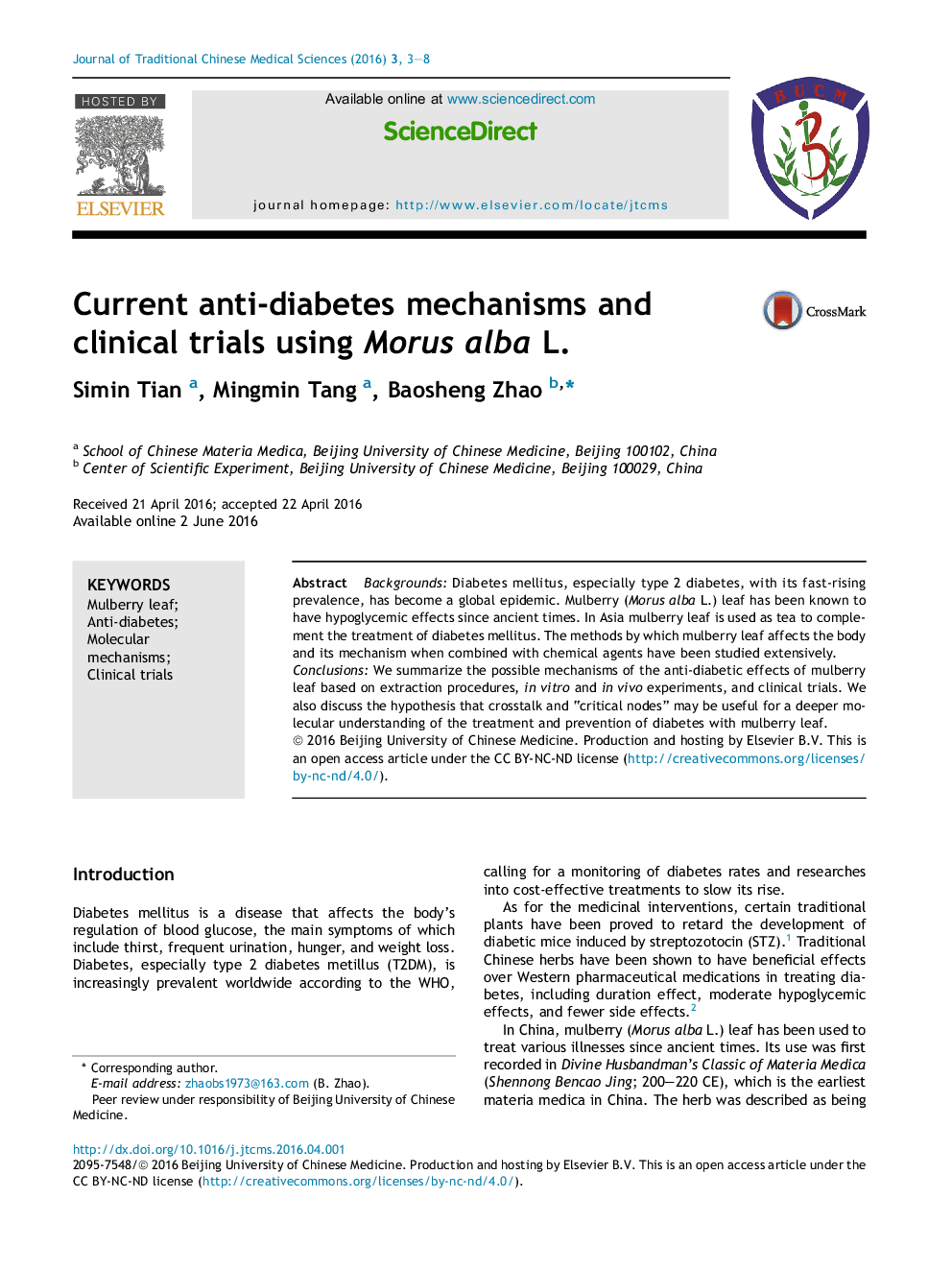| Article ID | Journal | Published Year | Pages | File Type |
|---|---|---|---|---|
| 1993127 | Journal of Traditional Chinese Medical Sciences | 2016 | 6 Pages |
•Mulberry leaves possess the anti-diabetic effect since ancient times.•The mechanisms of anti-diabetes are revolved in several molecular pathways in the meantime.•Crosstalk and “critical nodes” would possibly be helpful for the further research in anti-diabetes.
BackgroundsDiabetes mellitus, especially type 2 diabetes, with its fast-rising prevalence, has become a global epidemic. Mulberry (Morus alba L.) leaf has been known to have hypoglycemic effects since ancient times. In Asia mulberry leaf is used as tea to complement the treatment of diabetes mellitus. The methods by which mulberry leaf affects the body and its mechanism when combined with chemical agents have been studied extensively.ConclusionsWe summarize the possible mechanisms of the anti-diabetic effects of mulberry leaf based on extraction procedures, in vitro and in vivo experiments, and clinical trials. We also discuss the hypothesis that crosstalk and “critical nodes” may be useful for a deeper molecular understanding of the treatment and prevention of diabetes with mulberry leaf.
